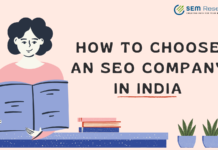It’s called search intent, or user intent or audience intent, but it always means the same thing: the reason, the primary need that pushed a person to use Google and do a search. Understanding and intercepting the need that drives the action and interest of people online is essential to be able to present valid content, and in fact the study of users’ intent has become a crucial must for SEO and positioning.
What is the search intent?
All people who do an online search hope to find something: the motivation can be the answer to a question, or the desire to visit a specific site or to buy a particular product. For some time an expression has spread that contains all these needs – precisely, search intent – which represents the original need that drives the searches of users of Google like create an app like uber and other search engines, the reason and the goal for which a user launches a query and, in some way, also what the same person expects to find on the results pages and contents.
The types of intent
Usually three macro types of research purposes are identified:
Informational, which contains the research in which the user is documenting himself on a topic and is interested in information on a particular topic;
Transactional, which concerns the searches of people who are willing to carry out an action (for example, they want to buy a product or service or download a file or software);
Navigational (navigational), which identifies the needs of those who are looking for information in a specific context or something on a particular site (generally they are branded queries, in which there is precisely a reference to a known brand that “narrows the field”).
Because it is important to know and recognize the search intent
Already from this broad distinction it is understood that each of these research intents can be associated with different journey experiences, with distinct keywords and often also with completely different SERPs: those who want to make a purchase will probably also want to know the price and the technical characteristics of that particular product, while those who are looking for information on its use are interested in other news.
Search engines are honing their ability to interpret user queries and respond by presenting the most appropriate search results, that is, pages that have the content that gives the right information to the right user. For some years now, Google, but also Bing, have been fielding increasingly advanced systems in the field of deep learning and natural language processing, such as the BERT language model launched by Google at the end of 2019.
And therefore, simplifying, before creating any content it is important to know and understand what is the real intent behind the specific query that affects our business, or we risk publishing online pages that do not get the desired results and write articles that do not rank.
A modern approach to keyword research
Quite simply: it is difficult – not to say impossible – to be able to position a product sales page in a SERP that Google has “christened” as information , just as it is difficult to be able to emerge in the first places with a guide “how to do” in a batch of purely commercial results .
In addition to the complexity of the operation, achieving this goal also risks being unnecessary or counterproductive for a website: if people are interested in buying (if the search intent is transactional and the SERPs are unique, with only commercial results), they will not want read additional information and – even in the event of a click – will immediately go back to find more appropriate answers. Likewise, if they want to read more details they will not be interested in buying, and therefore the page will not bring conversions and will only see its bounce rate increase.
It is therefore necessary to adopt a different approach to keyword research for editorial planning and site growth, no longer focused simply on the search for high volume keywords, but on identifying the best context. That is, we must learn to analyze the entire research process of users – from the moment the need “arises to the point where they find the solution – and then delve into what Google has already considered relevant and shown in SERP: this it will be the focus already chosen by the search engine, which we must follow if we want to publish effective and competitive content.
Intercept quality traffic
That way we can hit a key objective for the website: that is, we will not only organic traffic, but quality traffic, users of already -targeted and interested in what we can offer at this moment.
In other words, intercepting the search intent means finding out what the target audience wants and therefore maximizing the possibility of creating content with the right strategic keywords , thus increasing the probability that people find the site during the online search and find it useful , reading the information or by purchasing the goods and services that the website offers.
By applying these concepts to keyword research, we can start from three assumptions:
The contents must respond to a research intent.
The research intent highlights a need.
A relevant answer may satisfy similar words, but not different intentions.
We must therefore ask ourselves how the web page can provide a useful answer to people’s needs – the beneficial purpose of content – and write content that can satisfy the search intent better than other online pages.
How to find out the search intent?
There are various techniques to be able to understand what the audience wants from a given query: the classic method is to directly view Google’s SERPs and check what type of results are presented, i.e. whether there is a prevalence of transactional or informational content or if instead there is a “mixed” presence.
This check, however, must be performed carefully and should not be based only on our browser: cookies
and history can influence the data, for this reason we should use anonymous browsing or use a tool that performs a neutral scan.
It would then be necessary to analyze the individual pages more carefully to find out what type of information they report, how the topics are treated and so on: in short, a big job !
Obviously there are SEO tools that allow you to perform these operations in a very short time and automatically, and above all with SEOZoom we have two brand new functions that simplify the identification of the search intent and the creation of optimized content.
The SEO suite has in fact released Search Intent Tool and URL Search Intent Tool, which allow you to discover the search intentions of the users behind each single keyword, useful both for creating a new page already oriented to what it takes to position yourself on Google, both to improve the performance of an already published content.
The SEOZoom algorithms help us to choose the main topic to be developed (the main keywords) and related subjects, indicating which related keywords we can use to enrich the content without getting “out of focus” when we merge keywords and topics in a single article and when users (and Google) expect single and different articles .
These features – available in all software subscription plans – can appear complex, but a little practice is enough to learn how to use them at best, getting ideas for writing new content or identifying and filling all the shortcomings of the articles already published, with the goal of increasing traffic for each website.












